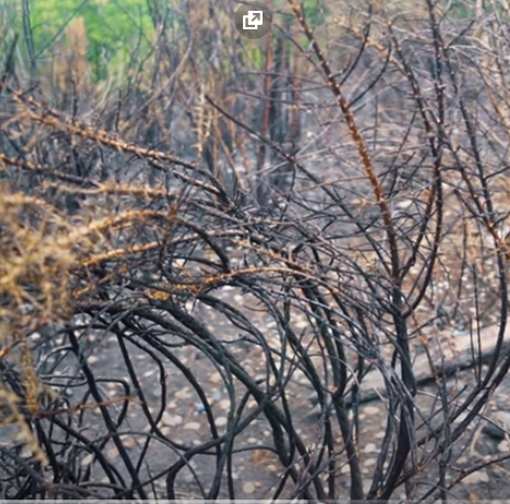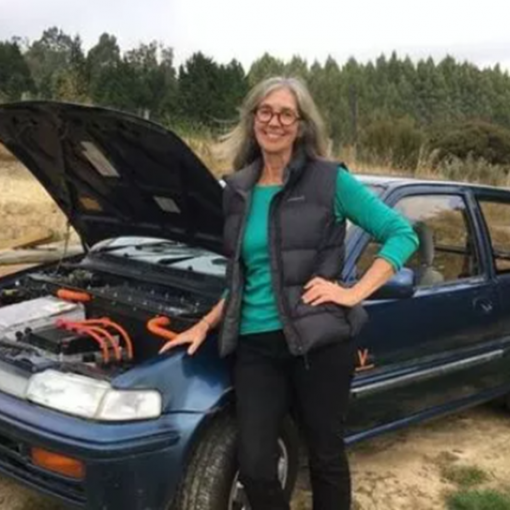15th JULY 2022 – The Heat Wave; solar, dry rivers, watering, lawns vs patios, vegs & pests!
As everybody I speak to today is wilting in the heat and has very low motivation for being at a computer, I predict this edition will have more photos and less text. You may like it even better, and if so, why not write to say so?
Talking of writing in, I was surprised how few comments came back in relation to the ‘Muck’ topic of last week’s blog. A few people unsubscribed though, so that is a bit of an indication of protest.
Correspondence
On other matters I heard from 2 readers; first about sighting glow worms, Bruce wrote
‘4 years ago there were literally hundreds of glow worms here at Stockbridge Meadows in Melbourn, Cambridgeshire. But I haven’t seen any for a couple of years. Maybe I haven’t looked closely enough.’
He continues, ‘apparently dry and relatively warm springs are good for glow worms and they like a mixed patch of longer grasses combined with some bare patches of ground and shorter grasses. Given the dry April we had, perhaps that explains why I was rewarded with seeing three, in an area of short grass one evening this week.’
Although not seeming to be a priority for official environmental bodies, glow worms have some very passionate supporters, one of which is Robin Scagell, the photographer below. His web site https://www.glowworms.org.uk is so fascinating, all the mysteries of how they glow, why they glow, where they glow are explained.
A list of sitings, updated almost daily is here http://ukglowworms.blogspot.com. This lets me know that sitings occur regularly in Devon, but I don’t see any at all in Cornwall. Does anyone want to contradict me on this, or explain why it might be the case?

Whilst on the topic of late evenings and pictures, did anybody else try to capture the Super-Moon on Wednesday? You need special equipment to do it justice, but I think this gives some sense of an orange orb, like the Giant Peach, above my garage!

I really wish that the small lights were glow worms. They are just cheap plastic things, but at least it shows that solar power is going great here at the moment.
Solar
At 15.00 hours on Friday 15th, the solar panels on this garage roof went up to 3230 watts; those along the side of my drive were belting out 3501. Even the small panel for monitoring the Eden Project Hot Rocks, was cooking out there. I remembered vaguely, there is a reason why a 4KW panel will not be approaching a 4000 output, in hot sun, but I wanted to just remind myself and explain this to you, since it does seem a bit puzzling.
In a nutshell, panels are set up to do the best they can in the climate around the installation. In the UK they are designed to work best in STC or Standard Test Conditions, when the solar cells are at 25 degrees C and the light is 1000 watts per squ meter. They are not designed to accept much hotter temperatures and so the model of receiving machine or ‘Inverter’ is carefully chosen to keep the power being exported well below the maximum 4000.


Even with restraint by the Inverter, my hot water tanks are bubbling. Neither they, nor the National Grid can cope with more and more solar input. If only we could be storing it up for the winter. And – in Germany and other parts of Europe, they must be saying the same ten times over as they fear gas shortages, courtesy of Putin and his war strategy. Storage of energy is such a big challenge!
Water
Yes, if you have a well-built dam and reservoir, you can store a load of hydro energy. But, at this time of year? Probably not. The rivers are almost dry, the reservoirs baked and the water area shrunk to a muddy puddle.
Each part of the UK deals with this challenge in its own way, some with a much easier job than others. In London, which is fed by an aquifer, as less and less water was being used for industry around the Millennium and just after, levels were rising, so there had to be a strategy to increase water use as a means of control. They achieved a 50 million litres a day increase in use, through renovating old bore holes and making new ones. This would certainly suggest London is not going to run out of water any day soon. http://www.groundwateruk.org/

Up North, especially In Yorkshire and Durham however, there is a real threat of hose pipe bans and other restrictions being needed if we don’t get rain for lots more weeks.


Water for plants
My collection of rain water in water butts is not sufficient for all the watering I need. There are 2 tubs, both of which have to be kept topped up from the mains, so we have enough water to turn the demonstration water wheels. I am writing a note to self ‘for the winter, get more water butts put in, near to the vegetable areas’.
Until now, luckily, I haven’t had to water a great deal to produce good home-grown vegs. I confess to a little pride, regarding the availability of so many healthy ingredients for my meals right now:-


The only down-side of the big watering needed this week, is that it destroys my latest slug control measure! I consulted a little gardening book a while back, at my wits end, with the effects of slugs and snails on miniature French beans, parsley and brassicas. First I tried out crushed egg shells all around … you can see a bit later, that it was not effective at all.
I am going to hand over to South London Carole now, as she has been part of the experiments and seems to have found a better way.
Keeping pests at bay
For anyone struggling with the fact that those evil (but very effective) blue slug pellets are no longer on sale, I think I may have a solution – putting a layer of sand around the tender, young plants seems to be an effective deterrent. It will also be a soil conditioner for my heavy London clay soil and it’s cheap and easy to do.



Small sticks are added, to protect plants from the various cats and foxes that roam around the allotment, as well as the pigeons. Once the plants reach a certain size you can dispense with them.
Caroline has pointed out that the sand can be washed away by heavy rain. Although this is true, it hopefully will not happen until they are much larger and less tempting for slugs and snails than when they were tiny and vulnerable and might as well have had a sign on them in mollusc language saying ‘Eat me’!
OK Carole, I accept, now I have washed the sand away, it is no big deal to put some more around for the next batch of plants. Thank you for this suggestion. 😊
Urban concrete jungle
In case you get the idea that Carole is dead opposed to all wildlife in her garden areas, you couldn’t be more wrong! She sent images and sad comments, about the number of neighbouring properties where all previous green plants and earth have been either paved over or covered with weed mesh and chippings.



A paved front garden that borders onto a pavement provides a very off-putting space for wildlife. We need to make sure that there are travel corridors for wildlife in order to maintain biodiversity and our gardens can be a large part of this. Even in London, with the right kind of garden you can see many insects living there such as bees buzzing around the flowers: in fact, much more so than in many of the mono-culture fields in our countryside.
Now we all realise that it can be necessary to use those types of surface, if a car is going to be parked or a table and chairs situated for outside drinks and BBQs. But it can only be to the good – aesthetically, financially and for our own health – to make some space for planters and grow vegs, all around as well.
There are some great articles online with suggestions for developing inner city vegetable gardens, using unusual containers, hanging baskets, roof top trays, hydroponic systems … even the traditional old mustard and cress! Well actually I am not suggesting mustard and cress; another friend, Catherine, has gone into overdrive with her ‘sprouting.’ She says the best health-wise are broccoli seeds, which you can sprout and eat quickly, all turned around within 7 days. Other bean types, like mung take longer. This is a whole new world, I was unaware of, but very interested to hear of the benefits, and the ‘Freshlife’ automatic sprouting machine. You could test the sprouting outdoors, but I have a hunch things may not go so smoothly. Temperatures and humidity need to be tightly controlled.



CONCLUDING
Carole also sent these pictures of a house in South Wales, that she received from a friend, to illustrate ‘outsolation’ (as mentioned in the past few editions). This work has been undertaken for Newport council by a northern firm, the Westdale Group. I really was hoping they could deliver outsolation for individual house owners, but no, unfortunately they don’t. But, when pressed they said ‘the panels we use are called EWI or External Wall Insulation panels, from Structherm Ltd – www.structherm.co.uk. Any house owner should be able to engage one of their approved installation contractors, to undertake an ‘outsolation’, which is sure to be a lot easier, quicker and cheaper than tackling internal walls. Just give Structherm a quick call, to locate a fitter near you.
External insulation added to the walls of the council houses on the Brynglas estate.


New 4 inch thick panels can be clearly seen jutting out here.
I hope you love Carole’s turns of phrase, as much as I do!
Mollusc signs that say ‘EAT ME’, take me back to Alice in Wonderland days
A Rose between 2 thorns, above. Ha H!




